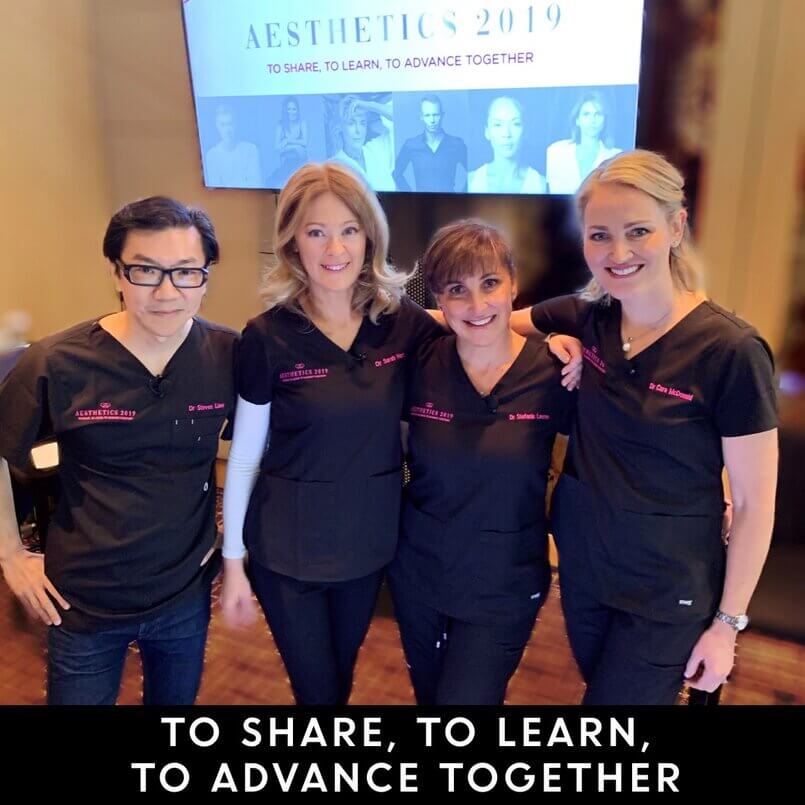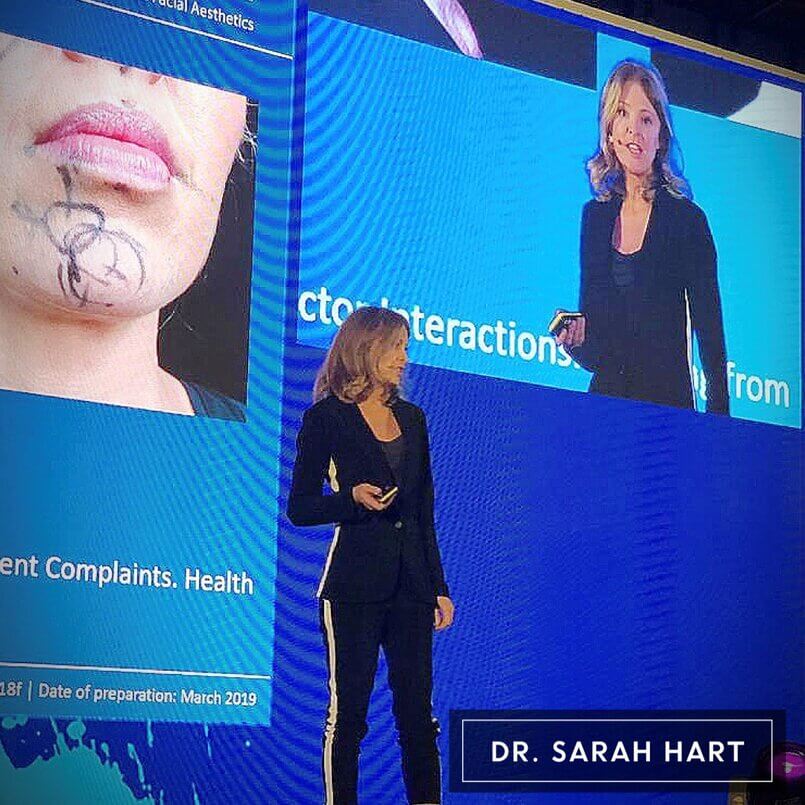My journey to becoming a Cosmetic Doctor – could it be for you?
Cosmetic medicine is new. It didn’t exist when I graduated as a doctor in 1994. These days, NZ doctors can learn aesthetic procedures by completing the two-year Diploma of Cosmetic Medicine. But I took longer to reach my final destination.
After six years of med school then six years of full-on hospital work, I was still seeking my niche. Being a talker, I loved to chat to my patients, listening to their stories. I wanted to understand their feelings as well as their physical problems. I had a strong sense that the two were intimately related. I wanted to address both.
A BACKGROUND IN PSYCHIATRY
Largely by chance, I did a locum job at a private psychiatric hospital in London. It was discreetly famous, full of rockstars detoxing from their drug of choice. Michael Jackson had holed up there to recover from the burns he sustained filming a Pepsi commercial. I was delighted by the full hour that psychiatry allocated for talking. What bliss to have that time!
From there, I moved to neuropsychiatry at the renown Bethlem and Maurdsley Hospital in London. This famous psychiatric hospital dates from 1247, with”Bethlem” being the origin of the word “bedlam”. It was hands-down one of the most intriguing experiences in my career. We successfully treated patients who had no physical basis for serious ailments like paralysis and seizures. It was a powerful lesson about the intimate connection between our mental and physical health.
So when I returned to NZ in 2000, I began specialising in psychiatry. It was often exhausting and stressful. But I was grateful to learn about the challenges my patients faced and increase my understanding of mental health. Little did I know this would be so relevant to the job I was about to discover.
DISCOVERING COSMETIC MEDICINE
Back in NZ, I was also getting Botox injections. I’d been having them since 1998 in London. Chatting to the lovely doctor injecting my face, I asked, “What’s it like to do Botox?” “Awesome” she said. “It’s not just about reducing wrinkles. It really makes people feel better about themselves.”
I was fascinated. I sought out Dr John Barrett, founding President of the New Zealand Society of Cosmetic Medicine (NZSCM), to find out more. To my delight, he offered to train me personally. How could I resist?
I was cautious at first, working part-time in both aesthetic medicine and psychiatry. I didn’t know if this new area had a future. But the world of aesthetic medicine expanded, and the more I learned, the more I loved it. The treatments worked quickly and effectively, and my patients were thrilled. Gradually, I left psychiatry behind.
LEARNING NEW SKILLS
Aesthetic medicine is a fascinating mix of science and artistry. My skills grew with injectables like botulinum toxin and dermal fillers, using them to reshape the face. I learned to operate powerful lasers to make skin look younger and healthier. I realised we love to watch positive transformations. They’re as uplifting to witness as to experience.
I’d finally found my passion, so I threw myself into learning as much as I could. In 2006, I successfully passed the exams to qualify as a member of the NZ Society of Cosmetic Medicine (NZSCM), part of the very first group of doctors to complete this formal qualification.
TEN YEARS YOUNGER IN TEN DAYS
A few months later, I was asked to appear as an expert on TV One’s “Ten Years Younger in Ten Days”. I joined a dentist, hairdresser, stylist and makeup artist in trying to transform a worthy candidate. I was nervous. Reality TV can eat people up! Might this destroy my career? Would I say something stupid? I decided to trust the universe and jumped in with both feet.
Happily, it was one of my most rewarding experiences. Watching our candidate’s eyes light up when they saw their transformation in the mirror showed me again how looking better makes you feel better.
I saw people make positive changes in their habits to improve their health as a result. They started exercising. They ate a better diet. They felt more confident. It confirmed that making people look good is not superficial, but hits at a person’s core feelings about themselves. And yes, I did say some stupid things on TV but it all makes for good viewing and I went on to complete three series of the show. To this day I have fond memories of the joy it created.
TIME TO GIVE BACK
Gradually I became known for my natural results. My nickname became “The Lip Queen”. As my skills grew, I realised I needed to give back, just as my mentors had shared their knowledge.
I moved into teaching in 2007, when I was approached to join the International Botox and Juvederm Advisory Boards. I didn’t really have much idea what this meant, but I was always up for learning more, so I said “yes’. The role involved training colleagues on how to perform injectable procedures. I had to learn how to demonstrate in front of a group and explain why I did what I did. It was nerve-racking at times, but it gave me a buzz. I discovered how exciting it was to see young protégées spark with enthusiasm as they mastered difficult skills.
MOVING TO THE INTERNATIONAL STAGE
From this small beginning, I became an international trainer and lecturer, sharing the stage with global opinion leaders. I have never stopped learning. My students teach me as much as I teach them, and I continue to challenge myself to acquire new skills. You can’t stay still for a moment in aesthetic medicine.
On the regulatory side, work was also needed. I progressed from being just a member of the NZ Society of Cosmetic Medicine to playing an active role on the Executive Board. We lobby for higher standards and better patient safety, as the regulations haven’t caught up with the reality of untrained practitioners jumping in to give it a go. Things are improving fast but we still have more work to do.
IS COSMETIC MEDICINE FOR YOU?
So what makes a good aesthetic doctor? Could it be for you? What sort of skills do you need? Here’s what I think is important.
You need to know how to talk with patients. Discussing our feelings about our appearance is daunting and must be approached sensitively. I believe the best cosmetic doctors are not straight out of the hospital, but come from specialities where there is great respect for establishing a trusting doctor-patient relationship, such as General Practice.
It helps to have a creative side. Good cosmetic work takes artistry. Do you have a passion for visual arts like drawing, sculpting, design, style, makeup or fashion? Without a good “eye” you will struggle to decide what a face may, or may not, need.
Steady hands and an eye for detail are an asset. When you’re treating faces, your patients appreciate nimble fingers. You’ll also need a passion for ongoing learning as its quite incredible how quickly new developments appear. In other medical specialities, a groundbreaking study appears perhaps every 5 years. In Cosmetic Medicine, what I did 6 months ago is already out of date.

Prepare for lots of interest from everyone.
Friends are fascinated.
Journalists call to hear about the latest treatment.
Media interest is high.
Be ready to speak about what’s possible – the public want to know.
Familiarity with social media is a definite bonus.
Is there a downside?
Yes, I think so.
I dislike false and unscientific marketing claims about treatments, and especially the targeting of vulnerable young women seeking too-large lips because they’ve seen it on Instagram. As “big business” seeks to enter this area with cookie-cutter clinics delivering one-size-fits-all deals, I believe properly qualified cosmetic doctors will play a vital role in ensuring ethical standards are upheld. Young people need responsible guidance about whether they really need treatments at a younger age. Now more than ever, good cosmetic doctors are needed to lead the way.
If you’re considering training as a cosmetic doctor, you can get more information here.
I’m passionate about building my skills. I’ve searched out the best teachers from around the world and attend international training events every year. Cosmetic Medicine changes so fast, keeping up-to-date is essential!
I’m also on a mission to improve patient safety and practitioner knowledge in New Zealand. I love to teach my colleagues through my training roles at NZSCM, Facecoach and Allergan.
Botox® is a Prescription Medicine containing 100 units of botulinum toxin type A for injection. It is used for the treatment of frown lines, forehead lines and crow’s feet. It should be administered only by trained medical professionals. Talk to your specialist about the benefits/risks of this procedure in appearance medicine. Cautions: People with defective neuro-muscular transmission disorders, infection at site of injection, glaucoma, pregnancy and lactation. Possible side effects include headaches, pain, burning/stinging, bruising, swelling or redness at the injection site, local muscle weakness including drooping eyelids/eyebrows, swollen eyelids, skin tightness, tingling sensations, itchiness, nausea and flu like symptoms. If you have any side effects or concerns speak to your doctor. You will need to pay for this medicine. Normal Doctors visit fees apply. Note: BOTOX® treatment lasts about four months and after this time further courses of treatment may be necessary. Speak to your specialist about your own situation.
Dermal Filler, Medical Device Class III to smooth facial wrinkles and folds, correct facial atrophic scars, restore or enhance the lips, or restore facial volume. Dermal filler has risk and benefits. Ask your doctor if dermal filler is right for you. For product information, check with your doctor or from product details with the supplier.
JUVEDERM® injectable gel is a medical device containing 24 mg/mL cross-linked hyaluronic acid. They are used for the filling of medium size and deep facial wrinkles by injection into the skin and for creating definition and volume in the lips. They should be administered only by trained medical professionals. Talk to your specialist about the benefits/risks of this procedure in appearance medicine. Cautions: Use in an area that has been treated with another dermal filler. People with autoimmune disease; or who are pregnant, breastfeeding, age under 18; or have an increased susceptibility to keloid formation and hypertrophic scarring. Possible Side Effects: Injection site inflammatory reactions (redness/swelling /itching/pain on pressure); induration or nodules; discolouration; weak filling effect. If you have any side effects or concerns speak to your doctor.
Note: Juvederm® treatment lasts from about 12-24 months.
Allergan New Zealand Ltd. PO Box 1873 Auckland 1140, New Zealand.






